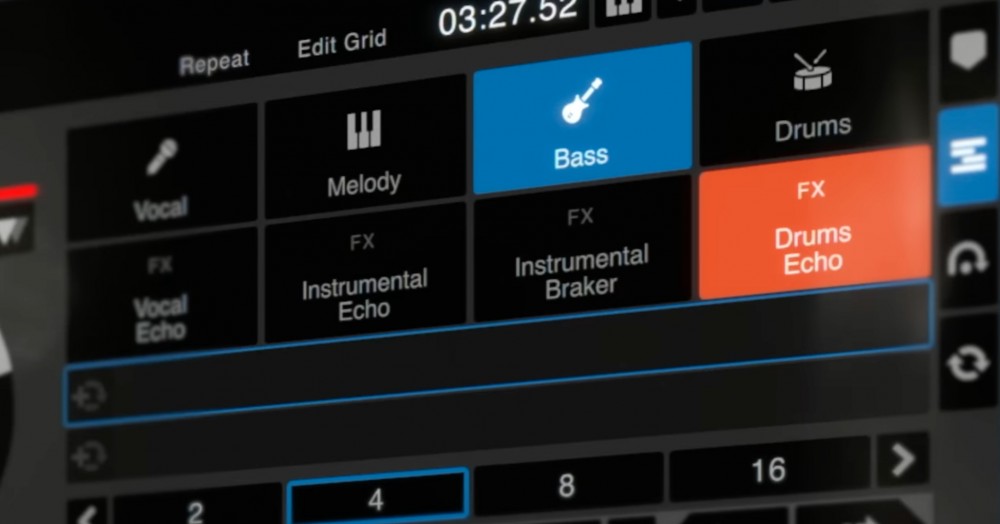Is Serato’s Stem-Splitting Update Really a Gamechanger?

The latest Serato update introduces a real-time audio isolation algorithm that splits song stems almost instantly. But is it worth the hype?
Software updates don’t tend to throw DJs and producers into a fit. Then again, software creators don’t tend to fundamentally change what their programs are capable of. And that’s precisely what Serato purports to have done with the latest version of their venerable DJ suite.
Depending on what pockets of Twitter, Instagram, and TikTok, your algorithm(s) operate(s) in, you might have seen the hyperbolics from both users and the company itself, who described a new stem-splitting feature as “game-changing technology” in the notes for the beta release of DJ Pro 3.0. So, naturally, if not out of sheer cynism, it felt necessary to investigate just how world-breaking this thing is, and just how it might impact the ever-entangled worlds of DJing, mixing, and producing.
Just as its name suggests, Serato Stems offers users the ability to isolate and manipulate different elements of any track loaded into either of the program’s virtual decks. Those familiar with the layouts of Serato DJ’s Pro and Lite versions will feel right at home with the integration, which replaces the handy performance pads to the left and right of your respective deck timelines with a 2×4 section of triggers for vocals, drums, melody, and bass tracks along the top, while the bottom row is dedicated to effects. Working on an aged MacBook Air with 8GB of RAM and a fairly low-power Intel Dual Core i3 processor, the immediate feel of the stems interface is easy and responsive, but falls short of seamless. To get snappier processing — not only in activating or disabling individual parts of songs while performing, but also in the program’s initial analysis of a track — you’ll need a machine with some muscle behind it, and a Serato-enabled controller that isn’t ancient.
With that said, for a frail computer that probably shouldn’t be used for music production in any capacity, the program handled pretty smoothly and with far less lag than expected. Slipping song segments in and out of the mix was a breeze, applying effects to individual tracks (and the mix as a whole) was nearly effortless, and the general approachability of the system makes it genuinely fun to toy with, regardless of whether you’re a pro or pedestrian selector.
Outside of DJing, the stem-isolating feature will prove wildly useful for sample-based producers, who can now save isolated song sections in a dedicated crate and import them into their DAW of choice. But be warned — those looking to (rightfully) exploit Serato Stems for a choice sample archive should probably assign an external hard drive to host the library, as the files tend to be massive.
With all its wins, Serato Stems still has some hurdles to work out in its beta phase. While the clarity of the isolations themselves (specifically vocals and drums,) can be pretty remarkable, they’re not consistent between songs. A bit of the bass track can bleed into the drums, and traces of the vocals can linger in the “melody” track, which tends to pick up an unpredictable range of non-percussive aspects of the instrumental. For the sake of precision, producers may opt for more tried sound-separating utilities on the market.
If there is something truly game-changing about the new Serato update, it’s in the sum total of a real-time stem-splitting experience. While there are certainly other DJ applications with stem-partitioning protocols available (Virtual DJ, djay, iZotope, and even Kanye’s surprisingly sophisticated DONDA 2 Stem Player device could be of use with some elbow grease,) the ability to divvy up a track into workable components for a mix this quickly is a genuine and deliberate innovation. It effectively turns the program into a conceptual sandbox for lean, freeform, sonic experimentation, allowing users to isolate and connect whatever threads they might hear between songs, while tamping down the clunk and needless complexity that has historically plagued the process. And from a purely creative standpoint, that’s exactly where you want to be.

